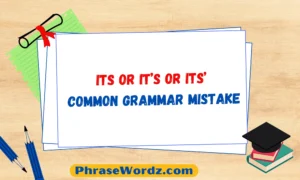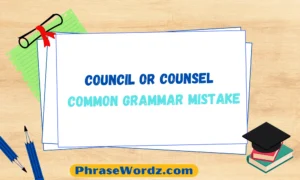In the vast landscape of English grammar, certain words and their conjugations can trip up even the most careful writers and speakers. One such pair that often confuses is **”braked”** and **”breaked”**.
Confused between “braked” and “breaked”? Learn the correct usage of these terms in English grammar. This article clarifies why “braked” is correct for stopping a vehicle and “breaked” is a common error to avoid.
This article will delve into the intricacies of these terms, explore their correct usage, and provide practical examples to help you navigate this common grammatical pitfall.
The Root of the Confusion
The confusion between “braked” and “breaked” stems from the similarity in sound and the irregular conjugation of certain verbs in English. To understand this issue fully, we need to examine the verbs “brake” and “break” separately.
Understanding “Brake”
The verb **”brake”** means to slow down or stop a vehicle using a brake mechanism. It’s a **regular verb**, which means it follows the standard conjugation rules for past tense and past participle by adding “-ed” to the base form.
– Present tense: brake
– Past tense: braked
– Past participle: braked
Decoding “Break”
On the other hand, **”break”** is an **irregular verb** with multiple meanings, including to separate into pieces, to interrupt, or to violate rules. Its conjugation doesn’t follow the standard “-ed” rule:
– Present tense: break
– Past tense: broke
– Past participle: broken
The Mistake Explained
The error occurs when people mistakenly use **”breaked”** as the past tense or past participle of “break”. This incorrect form likely arises from the tendency to apply regular verb conjugation rules to irregular verbs.
Common Contexts for Confusion
The mix-up between “braked” and “breaked” often happens in contexts related to vehicles, accidents, or situations involving stopping or breaking something.
Correct Usage of “Braked”
“Braked” is the correct past tense and past participle form of “brake”. It should be used when describing the act of slowing down or stopping a vehicle in the past.
Incorrect Usage of “Breaked”
“Breaked” is not a correct form in standard English. It’s a common mistake made when people attempt to use the past tense of “break”.
Correct Usage of “Broke”
“Broke” is the correct past tense form of “break”. It should be used when describing an action of breaking something in the past.
The Role of Context
Context plays a crucial role in determining whether to use “braked” or “broke”. The surrounding words and the overall meaning of the sentence should guide your choice.
Common Phrases with “Brake”
Several common phrases use the word “brake” correctly:
– “Hit the brakes”
– “Pump the brakes”
– “Brake for safety“
Common Phrases with “Break”
Likewise, “break” appears in many idiomatic expressions:
– “Break a leg”
– “Break the ice”
– “Break the bank”
The Importance of Proofreading
Careful proofreading can help catch mistakes like using “breaked” instead of “braked” or “broke”. Reading your text aloud can often help identify these errors.
Tips for Remembering the Difference
To help remember the difference, you can use mnemonic devices:
– “If you brake, you won’t break your car.”
– “The ‘a’ in brake is for ‘auto’ – it’s about vehicles.”
Impact on Communication
Using “breaked” instead of “braked” or “broke” can lead to confusion and may diminish the perceived credibility of your writing.
.
Grammar Rules for Irregular Verbs
Understanding the rules for irregular verbs can help prevent mistakes like using “breaked”. Many commonly used verbs in English are irregular and require memorization.
The Evolution of Language
While “breaked” is currently considered incorrect, language evolves over time. Some irregular verbs have become regular in the past, though this process typically takes many years.
ESL Challenges
For English as a Second Language (ESL) learners, the distinction between “braked” and “broke” can be particularly challenging due to the irregular nature of “break”.
Teaching Strategies
Educators can use various strategies to help students master the correct usage of “brake” and “break”, such as contextual learning, memory aids, and regular practice.
Digital Age Considerations
In the age of autocorrect and predictive text, it’s important to be vigilant about these kinds of errors, as technology may not always catch the misuse of “breaked”.
Conclusion
Mastering the correct usage of “braked” and “broke” is an important aspect of English grammar. By understanding the difference and practicing their use in context, you can improve your communication skills and avoid this common mistake.











